Matador Network's Blog, page 1082
June 5, 2019
American social lives peak at 23

No one said making new friends was easy, but apparently, the phenomenon of “not making new friends” is something of an epidemic. A study by OnePoll and Evite, which polled 2,000 American adults, found that no one had made a new friend in the past five years. The study concluded that age 23 was the peak of the average American’s social life, and afterwards, loneliness is on the rise, and we begin to lose connections. A combination of no longer being in school, shyness, cross-country moves, and lack of hobbies have been major contributing factors.
Alex Williamson, Chief Brand Officer at Bumble, told Mic, “This trend might not be the worst thing. It’s natural and normal,” she says, “to evolve and become distant from friends with the natural transitions and phases of life.” This includes moving on from old friendships and losing touch with friends from college.
To remedy this trend, however, Williamson advises making a conscious effort to spend more time with friends to keep the friendship fresh. “As we get older,” she says, “it can become more difficult to carve out quality time with our friends, but making time to cultivate our friendships is incredibly important. Sneak in small ways to keep up the momentum in our friendships, whether that’s running errands together, grabbing coffee before work, or going to an exercise class together.”
While some people may thrive in large social circles, others may actually prefer to only have one or two close friends. Sometimes, having just a few, intimate connections is far more valuable. Regardless of your own social goals, however, it’s always a good idea to be open-minded to meeting new people and never draw a hard line in the sand when it comes to making connections. 
H/T: Mic

More like this: 6 ways to make friends if you’re new to NYC
The post Study shows that the average American hasn’t made a new friend in five years appeared first on Matador Network.

Ja Rule talks new music festival

It appears as though Ja Rule hasn’t learned his lesson from Fyre Festival. The “luxury music festival” turned out to be a complete sham and landed Billy McFarland, co-founder of the festival, in jail. Documentaries have been released about the incident, and though Ja Rule was never charged with any wrongdoing, knowledge of his role in the debacle is pretty widespread. Still, he seems determined to make a music festival happen.
On the Breakfast Club this morning, the rapper revealed that he “wanted to do an amazing fucking festival, and I believe Billy did too. It just didn’t manifest in that way.” Despite the failure, however, he says investors have been reaching out to him offering to help him execute a festival correctly. When asked if he would actually follow through on planning another festival, his response was, “Fuck yeah, and I’m going to kill it!”
He certainly didn’t take the Fyre Festival disappointment lightly or find it humorous (as many have). “It’s heartbreaking to me,” he told paparazzi at LAX. “It was something that I really, really wanted to be special and amazing and it just didn’t turn out that way. But, you know, in the midst of chaos there’s opportunity. So I’m working on a lot of new things. I got my new platform Iconn.”
He went on to say that “[Fyre Fest] is the most iconic festival that never was, so I have plans to create the Iconnic music fest. But you ain’t hear it from me”.
Hopefully, his next festival endeavor turns out better than the last one. 
H/T: Nylon

More like this: 12 European music festivals you need to hit this summer
The post Even after Fyre, Ja Rule is determined to launch another music festival appeared first on Matador Network.

Best natural landscapes in Bolivia

Bolivia is a landlocked expanse stretching from the Andes to the Amazon rainforest that shares borders with five other countries. While neighbors like Brazil, Argentina, and Chile get all the attention, Bolivia sees very few visitors; most people have never heard of its incredible natural landscapes and historical sites. Even travelers who do tumble through Bolivia tend to only pause long enough to visit Uyuni, the largest salt flats on the planet.
However, there is so much more to this forgotten country, including 23 national parks, nature reserves, and wildlife sanctuaries, plus at least 60 historical places hiding five UNESCO World Heritage sites. If you’re planning a visit to South America, don’t make the mistake of overlooking Bolivia’s incredibly diverse and captivating spaces. Rather, be sure to add these epic spots to the itinerary.
Sama Biological Reserve

Photo: Stephanie Frias
The 60-mile drive southwest from Tarija to the Reserva Biológica Cordillera de Sama takes about two hours. The reserve encompasses an astounding 268,109 acres of natural preservation area. The pristine landscape has earned coveted recognition as a Ramsar Site, an environmental sector delegated by UNESCO, for the countless species of high Andean birds who live there, alongside puma, deer, and over 250 unique plant species.

Photo: Stephanie Frias
It’s so infrequently visited, you’re unlikely to encounter other visitors, making it possible to explore for days only making contact with local indigenous people tending their sheep and cows. This is a place where outdoor lovers can meander along the isolated sparkling coastlines of saltwater lakes, slide down whistling dunes devoid of a single footprint, and gaze up in awe at soaring endangered condors looping to and fro across towering plateaus and peaks.
And if nature doesn’t inspire, the cultural and historical value surely will. The tiny settlements harbor charming pastoral huts, picturesque adobe churches, and genuine shepherds pushing their flocks to the horizon as soon as the sun rises. Free range cows trickle through the prickly paramo and into the icy lagoons laced with thousands of lazy flamingos. If you can find it, the Cordillera of Sama Biological Reserve even boasts one of the last remaining segments of an original Inca trail.
Tupiza
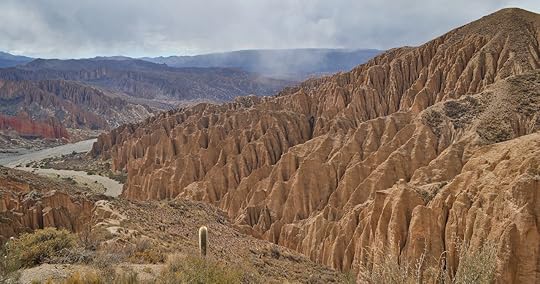
Photo: Stephanie Frias
Head 87 miles northwest from the Sama Reserve, in the direction of the city of Uyuni (another 130 miles away) and you’ll stumble across Bolivia’s very own sector of the Wild West known as Tupiza. About as eclectic as it gets, the dusty city indeed suggests a link to the North American comparison both in scenery and tomfoolery.

Photo: Stephanie Frias
As the story goes, the legendary Wild West outlaws Butch Cassidy and the Sundance Kid ended their long bank-robbing reign right here in the middle of desolate Bolivia. Contrary to the events in the Hollywood movie named after the felons, Butch Cassidy shot his partner dead before committing suicide here. It all happened in the wake of being discovered by the local authorities. The small city contains many noteworthy sites related to the event or named after the duo.
However, the real secrets of Tupiza lie in the rugged outlying areas. The seemingly unnamed panorama manages to puzzle together the iconic North American Southwest landscapes of Utah’s Red Rock Canyon, the Grand Canyon, and the Badlands into one gripping expanse in remote Bolivia.

Photo: Stephanie Frias
Although there isn’t an official park (hence, no entrance fee), landmarks with quirky names can be visited independently, including notable sites like Puerta del Diablo (Devil’s Gate), Cañon del Inca (Inca Canyon), La Silla (The Seat), and Valle de Los Machos (Valley of the Males), so named for its tall rock formations. Although you can explore the area by horseback, biking, or hiking, the best way to see the vast terrain is by an off-road excursion through the dirt roads that trail from the wells of river beds to the cloud-scraping tips of colorful peaks.
Samaipata
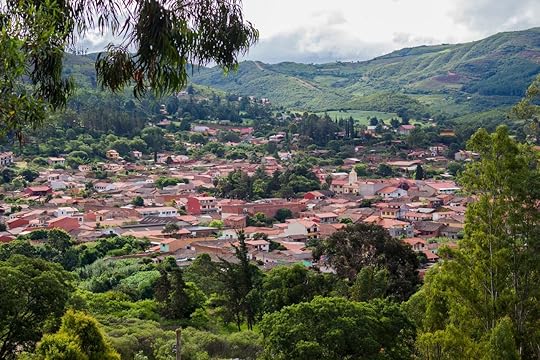
Photo: HelmDyck/Shutterstock
Samaipata is a tiny, isolated village, home to barely 5,000 residents, which rests in the foothills of the Andes about 75 miles southwest of Santa Cruz. This side of Bolivia, east of the Andes range, is much lusher, and Samaipata borders the southern edge of the acclaimed Amboró National Park.
The picturesque small town claims a surprising international heritage. An expat hub of sorts, Samaipata is home to dozens of nationalities that have inspired the local architecture, cuisine, and cosmopolitan vibe. Despite the interesting influx of cultural influence, Samaipata also holds onto its roots — offering a fantasy-like haven for exploring rituals and a UNESCO World Heritage Site linked with pre-Inca tribes.
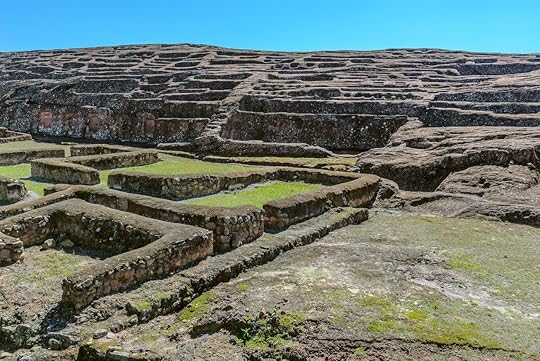
Photo: Noradoa/Shutterstock
A particular point of interest is the Samaipata Fort, a fascinating site which collectively preserves not one but three ancient cultures. Although referred to as a fort, typical ruins are not on display here. Instead, the remains are embedded into what has been called the largest rock formation in the world. Believed to have been first carved by the pre-Inca Chanè warriors as a ceremonial place, the locale was subsequently taken over by the Inca, and then the Spaniards who eventually founded Samaipata.
Today, El Fuerte de Samaipata still serves as a center where visitors can witness the traditional indigenous festival that celebrates the Amaya New Year, which takes place annually on June 21, or the Winter Solstice. This is considered the most important holiday in Bolivia, and indigenous civilizations have been celebrating this date for centuries in accordance with their agricultural calendar.

Photo: Stephanie Frias
Those who do make it to Samaipata shouldn’t leave without spending an afternoon or a night at the El Pueblito Resort. Perched on a hill high over Samaipata, the village at El Pueblito Resort is a place suspended in time, mimicking the pages of a European storybook. From the historic plaza and brick streets to 12 intricately designed suites and houses, each space has a distinct theme to memorialize a historic town. Visit the Baker, the Butcher, the Dressmaker, the Bank, or stay in the Clockmaker, the Tavern, the Library, and more.
Tips for traveling in Bolivia
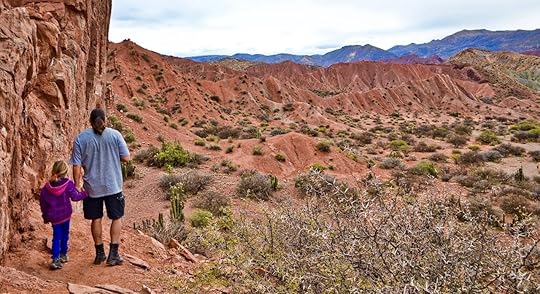
Photo: Stephanie Frias
Although you can reach each of these Bolivian treasures by bus year-round, Bolivia is best explored with an off-road vehicle in the dry season between May and October. Be aware that the coldest months, June and July, can dip down to 25 degrees Fahrenheit, although daytime temperatures still hover around 60 degrees. All of the places on this list are located in high altitude environments, from 5,200 feet to more than 15,000 feet in altitude.
Take time to acclimate before hiking or exploring, and take advantage of any coca products offered it. Although coca leaves do come from the cocaine plant, possession and consumption of the leaves are legal. Coca leaves have been chewed for centuries by indigenous populations as a natural remedy for altitude sickness. It’s affordable, safe to consume, and available in the form of raw leaves, tea, and candy. 

More like this: 10 things I wish I knew before visiting the Uyuni Salt Flats, Bolivia
The post Bolivia has the most epic landscapes you’ve never heard of appeared first on Matador Network.

Civilization may end in 30 years

We’ve all heard the glum prognosis that climate change will ultimately bring an end to human existence, but this new study says it could happen sooner than we thought. According to an analysis published by an Australian think-tank called the Breakthrough National Centre for Climate Restoration, climate change may end human civilization in just 30 years. The report says that on humanity’s current trajectory, “planetary and human systems [are] reaching a ‘point of no return’ by mid-century, in which the prospect of a largely uninhabitable Earth leads to the breakdown of nations and the international order.”
This morbid prediction is based on the fact that the Earth’s temperature is likely to rise by at least three degrees, which could facilitate the quick collapse of ecosystems like coral reefs, the Amazon rainforest, and the Arctic. This could cause a billion people to relocate from their now-unlivable conditions, and around two billion to face scarce water supplies. Agriculture in many parts of the world would also collapse, meaning food production could grind to a halt.
According to the report, “Even for 2°C of warming, more than a billion people may need to be relocated and in high-end scenarios, the scale of destruction is beyond our capacity to model with a high likelihood of human civilization coming to an end.”
And this isn’t just speculation and hearsay, either. The report has been endorsed by retired Admiral Chris Barrie, who was chief of the Australian Defence Force from 1998 to 2002. According to him, the study reveals “the unvarnished truth about the desperate situation humans, and our planet, are in, painting a disturbing picture of the real possibility that human life on Earth may be on the way to extinction, in the most horrible way.”
The outlook may not inspire optimism, but it should inspire a resolve to combat climate change more fiercely than ever. 
H/T: VICE

More like this: The 7 cities making the biggest strides toward sustainability this year
The post Human civilization may end in 30 years thanks to climate change, according to new study appeared first on Matador Network.

Cuba travel bans explained

In case you were off the grid yesterday, the Trump administration continued its rollback of 21st-century progress, severely limiting Americans’ ability to travel to Cuba. Where going to the island nation had become commonplace since the Obama administration eased travel restrictions in 2016, getting there is about to get a lot more difficult. And quick weekend trips to Havana will once again be a thing of the past.
So why, exactly, is the government telling us where we can and cannot go? And what does it mean for you, the American traveler? Questions abound this week, and we’ll try and answer as many as we can.
What exactly are these new restrictions?
Most importantly, Donny T and co. are eliminating the commonly used “person-to-person” visa, a favorite of group tours and cruise ships carrying US citizens to Cuba. The visa allowed for tourists to go to Cuba to participate in cultural, educational activities with locals, which, it being Cuba, could mean literally anything from rolling cigars to mixing mojitos. You just couldn’t go to laze on the beach. The ban of this popular visa means means that, for now, cruise ships won’t be able to make port stops in Cuba, and travel companies offering trips there will have to cease offering trips to Americans.
The government is also prohibiting personal aircraft and watercraft from going to Cuba without special permission. That includes yachts, private jets, prop planes, cigarette boats, and jetskis, if you’ve got one with a particularly long range. This affects several resorts in the Florida Keys, which offered day trips to Havana as part of special packages. It also affects anyone with Sonny Crockett dreams of piloting a cigarette boat with a smoldering brunette to dance the night away in a salsa club. Though Sonny, he never plays by the rules, anyway.
Why is the government doing this? I thought this was America!
It IS America! But just like the government has laws telling us we can’t litter or jaywalk, so is it able to restrict countries where we can travel. According to a statement from US Treasury Secretary Steven Mnuchin, the new restrictions were a result of Cuba playing “a destabilizing role in the Western Hemisphere, providing a communist foothold in the region and propping up US adversaries in places like Nicaragua and Venezuela, undermining the rule of law.”
Will airlines stop flying to Cuba now?
No, commercial flights from the US to Cuba are still perfectly legal. But the number and frequency of flights will likely drop, since fewer people will be going.
Who will be able to go to Cuba?
Anybody! Anybody, provided they fit into one of 12 categories:
Family visits
Government business (US or foreign)
Journalistic activity
Professional research or professional meetings
Educational activities
Religious activities
Public performances
Clinics
Workshops
Athletic and other competitions
Support for Cuban people
Humanitarian projects
Activities of private foundations or research or educational institutions
Importation or transmission of information
Authorized export transactions
So school groups, Doctors without Borders, mission trips, sports teams, jazz choirs, and journalists can go. That’s journalists, not “influencers” with 100,000 Instagram followers.
Anyone visiting family in Cuba is also permitted, or anyone doing research for a school or work project. Ditto for people with legitimate business in Cuba. The door’s not completely closed, but you’ll need to get creative to find a way in.
I already booked a trip to Cuba, can I still go?
Yes! To avoid a complete logistical cluster and potentially millions of lost dollars to the travel industry, you’re still allowed to go to Cuba if you purchased some sort of travel product prior to June 5, 2019. That could be purchasing a group travel package, an airline ticket, paying for a hotel, etc. If you haven’t paid for anything yet, though, you’ll probably need to change your plans.
I booked a cruise that stops in Cuba. Will it still stop there?
Likely not. Cruise lines must now obtain special licenses from the US government to stop in Cuban ports. Most big cruise lines saw this coming a nautical mile away and have begun the process of getting those licenses already, but whether they’re approved by the time of your cruise is anyone’s guess.
Cruise lines will likely replace your Cuban stop with a stop somewhere else, like St. Thomas or Grand Cayman or one of many ports in Jamaica. If hitting yet another straw market wasn’t exactly what you signed up for, you’ll need to contact your cruise line to see what its policy on cancellation is. If you purchased travel insurance, which you always should, it should cover itinerary changes and you can get your money back.
Will we ever be able to go to Cuba easily again?
That depends. The next presidential administration can change the rules right back, if it so desires. The ephemeral nature of executive branch policy is one of the luxuries we have as Americans — since we don’t have a dictator that sticks around until he dies. That said, whether or not the people-to-people visa is ever reinstated depends very much on who our next president is, and there’s only one way to determine that: voting, another luxury we have as Americans.
But for now, and until at least 2021, getting to Cuba is going to be a lot more restrictive. And, while not impossible, certainly not the free and easy experience we had up until this week. 

More like this: Trump imposes new ban on cruise ships and organized tours to Cuba
The post Can I still go to Cuba? Your Cuba travel ban questions answered appeared first on Matador Network.

How to travel with sex toys

Planning an adult trip away should be (almost) as much fun as the trip itself, but figuring out how to get sex toys through airport security is pretty daunting if you haven’t done it before. After all, it’s not like you can just ring up a travel agent and get their top tips.
Everyone deserves a fulfilling sex life, so if you do want to take your sex toys on vacation there’s absolutely nothing to be ashamed about. That said, there are a few things to bear in mind if you want to keep your toys safe and save yourself some red-faced stress on the security line. To help you plan ahead, here’s everything you need to know about taking sex toys with you on your next trip away.
1. Keep your toys clean and safe.
Rule number one: Keep your toys wrapped up in a cloth or drawstring bag. You don’t want something that’s destined for intimate use to be collecting dust and crumbs at the bottom of your suitcase — or worse, snuggled up against your shoes.
It’s also a good idea to keep things tucked away just in case security needs to search your luggage. Random spot checks are rare — but they do happen, so keep everything under wraps and away from prying eyes. Most toys come with their own bags, but if you’re in the market for a new one and want something a little different, then check out Etsy for a range of colorful velvet and lace options.
You also need to keep your toys wrapped up because some plastics react when they come into contact with each other. Silicone famously doesn’t like other silicone (including silicone-based lube), and most porous jelly toys warp when they’re stored next to each other. Rather than risking it, keep all your plastic toys separate, and don’t put them in a Tupperware container or plastic bag. Otherwise, you might end up with something that looks a little like a melted gummy bear by the end of your trip.
2. Buy travel-friendly versions of your favorites.
Space isn’t so much of an issue if you’re checking your bag in, but if you’re just taking hand luggage then you’ll need to get creative with your packing.
Bullets, small butt plugs, and cock rings are compact and can be popped in your suitcase without too much of a bother. You can also get mini versions of your favorite vibrators, including the magic wand. If you’re a guy and you want to take a Fleshlight, then consider swapping it for a sleeve — they offer the same sensation, but without the bulky, hard plastic shell (and they’re less obvious-looking in the event of a bag search).
You may also want to take your cheaper toys on holiday, just in case you lose something, or it gets damaged on the journey over. You don’t want your brand-new $100 vibrator breaking en route.
3. Plan ahead with a sex toy checklist.
Taking battery-powered toys? Pack spare batteries. Taking a mains-powered vibrator? Take an adaptor. Taking a rechargeable toy? Top it up before you leave. It sounds like common sense, but it’s so easy to overlook these things when you’re caught up in the excitement of planning your trip.
Other things to add to your checklist include lube and sex toy cleaner — which you should use both before you travel (just in case security does go through your bag), and before you actually use the toy itself.
4. Don’t forget to take out the batteries.
We’ve all heard horror stories about some poor lady’s vibrator spontaneously going off in a suitcase. The chances of this happening to you are slim (most vibrating toys have a travel lock option — use it!) but it’s better to be safe than red-faced. Another reason you should whip those batteries out pre-flight, and any other time you’re not using it, is that leaving them in can corrode the toy and drain the battery life.
Most batteries are okay for air travel, but some airlines have restrictions on alkaline batteries — including AAA and AA, the most popular batteries used in sex toys — going into the hold. Just to be safe, put them in your carry-on.
5. Double check the airline’s rules on liquids.
If you’re taking lube, then it’s fine to put it in your checked bag. If you’re only taking hand luggage, then make sure it’s 100 milliliters/3.4 ounces or under. Anything over that and you’ll have to hand it over to security to dispose of — and that includes a 250-milliliter bottle that’s only half-full.
It’s also worth keeping in mind that the plastic bags you put all your liquids in at security are see-through, so if you don’t want your fellow travelers to see what you’ve got in there, then either take the label off or pour it into a smaller container. And don’t forget to put the lube lid on tightly — bottles have a habit of popping open on planes.
6. Be careful about bondage.
Bondage items are a little trickier to take on vacation. Whips, floggers, and paddles could be classed as self-defense items and confiscated, so unless you’re willing to take that chance, leave them in the bedroom.
Handcuffs, rope, nipple clamps, and hoods are usually considered okay, so store them next to each other and if possible, put them in their original branded bags and add labels to let security know what each item is. These should all go in your checked luggage though, not your hand luggage. Be warned: They may be confiscated. It’s a risk that’s yours to take.
If you have to take bondage items with you in your hand luggage, then choose carefully: blindfolds, feather ticklers, and bondage tape should be okay as they’re non-threatening, but be aware that it’s up to the discretion of the airline. If questioned, just breathe, smile, and calmly tell security they’re personal items and keep your head held high. They’ve seen it all before.
7. Opt for discrete-looking toys.
If you’re worried about the x-ray machine picking out the shape of something unmistakably x-rated, then invest in a toy that doesn’t look like a sex toy.
Obviously, if you’re taking a dildo, then there’s not much escape — but for vibrators, there are plenty on the market that don’t have that famous “rabbit” shape, including ones that look like a necklace, a USB stick, and a body massager. Although bear in mind, if your vibrator looks too obscure, or like a weapon, security might freak out and chuck it. To be safe, put it in the original packaging and label it.
Also, if you’re taking Viagra, then put it in a secure, preferably zipped compartment of your bag where it has no chance of making an escape. You don’t want a load of universally recognized little blue pills flying all over the place while you’re trying to pull your jumper out of your bag. It does happen.
8. Check if your toys are legal on the other side.
Sexual customs vary wildly around the world, so save yourself the headache of getting your toys binned at security and double check the rules. Some countries completely prohibit adult toys and porn, including Thailand, India, Vietnam, the Maldives, and Malaysia. If you live in the US, then you’ll be fine in every state except Alabama, where the sale of sex toys is a criminal offense.
If the worst happens and your luggage is detained or your bag is searched, be honest and stay confident: You’ve done nothing wrong. You’re also entitled to ask for a private screening with more than one agent present. In the unlikely event that you encounter unprofessional conduct, contact your local embassy and make a formal complaint. Remember: No one should ever be shamed for enjoying a healthy sex life. 

More like this: This travel app wants to help frequent fliers hook up
The post How to take sex toys on vacation appeared first on Matador Network.

Oakland legalizes magic mushrooms

After Denver became the first city in the US to legalize magic mushrooms, Oakland is following suit. Several speakers testified before the City Council claiming that psychedelics helped them overcome depression, drug addiction, and PTSD, and the council voted unanimously to decriminalize the adult use and possession of mushrooms.
The new law makes the investigation of adults possessing, growing, using, or distributing entheogenic plants one of the lowest priorities for police, and city funds are not to be used to enforce laws criminalizing the substance. There is also a provision directing the city administrator to return to the council within a year to give an assessment of how the law is impacting the community.
Carlos Plazola, chair of the advocacy group Decriminalize Nature Oakland, hailed the therapeutic properties of mushrooms. “Entheogenic plants and fungi,” he said, “are tremendous for helping to enable healing, particularly for folks who have experienced trauma in their lives. These plants are being recommended pretty extensively undercover, underground, by doctors and therapists.”
Councilmember Noel Gallo, who introduced the legislation, believes police should focus on real crime, not prosecution of users of the susbtance. “Growing up in the Mexican community,” said Gallo, “this was our cure. That was our Walgreens. We didn’t have a Walgreens. We didn’t have a way to pay for any drugs. These are plants we have known for thousands of years in our community and that we continue to use.”
Magic mushrooms do, however, remain illegal under state and federal law. 
H/T: US News

More like this: Everything you need to know about doing magic mushrooms
The post Oakland is the second US city to legalize magic mushrooms appeared first on Matador Network.

Carnival fined for dumping waste

If you’ve always wondered where all the trash goes on your Carnival cruise voyage, you might not actually want to know the answer. According to a court filing, Carnival has been releasing food waste and plastic into the ocean, failing to properly record waste disposals, creating false training records, and not reporting environmental compliance issues to inspectors after secret inspections. As a result, Carnival has been ordered to pay $20 million, undergo more inspections, devote more resources to ensure environmental compliance, reduce its single-use plastics on board, and hire teams to improve waste management procedures. Failure to do so will result in additional fines of $1 to $10 million per day.
A Carnival representative told Business Insider, “These issues were unacceptable failures in our processes that were not in accordance with our policies and procedures, and do not reflect the culture we have built at Carnival Corporation and across our nine cruise line brands.”
This isn’t the first environmental issue Carnival has had, either. In 2017 Princess Cruises — a Carnival subsidiary — pled guilty to illegally releasing oil into the ocean, and was required to pay $40 million. Apparently, it didn’t learn its lesson.
The representative, however, promised a change of course, touting Carnival’s commitment to the environment as one of the company’s chief values. “Carnival Corporation remains committed to environmental excellence and protecting the environment in which we live, work, and travel,” they said. “Our aspiration is to leave the places we touch even better than when we first arrived.” 
H/T: Business Insider

More like this: 7 actually cool cruises that are nothing like the ones your parents take
The post Carnival hit with $20 million fine for dumping waste into the ocean appeared first on Matador Network.

Southwest fall sale $39 tickets
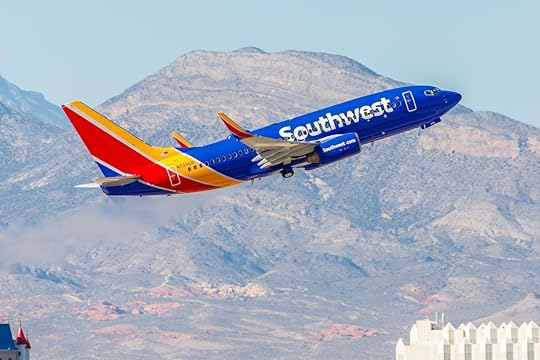
It’s never too soon to start planning how to deal with your post-summer malaise, and an autumn vacation is the perfect way to do it. It might be tough to motivate yourself to look toward fall with beach season already here, but luckily, Southwest Airlines is making that prospect a bit more enticing. Its new sale is offering flights all around the US for as low as $39, valid for travel dates between August and September. But you’ll have to book fast, as the sale only lasts until midnight on June 6.
Discounted fares are available from nearly all major North American cities. Here are some of our favorites:
San Diego to San Jose for $39
Boston to Baltimore for $49
Chicago to Louisville for $49
Phoenix to Los Angeles for $49
Houston to New Orleans for $49
New York to Chicago for $79
It’s worth keeping in mind that you must be able to travel between August 20 and December 18, and that there are blackout dates around Labor Day and Thanksgiving. Unlike many budget airline sales, however, there is no assigned seating or baggage fees, so you can carry up to two checked pieces of baggage free of charge.
Browse the full list of flights to find your perfect fall getaway. 

More like this: Why you get dehydrated on a flight and how to prevent it
The post Southwest’s fall travel sale is here with flights for just $39 appeared first on Matador Network.

June 4, 2019
ATM vs money exchange service abroad

When it comes to using currency abroad, everything has changed with the rise of travel rewards credit cards, international ATMs, and travel-friendly bank accounts. Gone are the days when preparing for an international trip involved ordering $2,500 worth of traveler’s checks from your bank, only to find them gone a solid week before your trip ends, leaving you panicked in your hotel room with no choice but to enact your best “daddy please” voice and phone home for a wire transfer. Even the long-standing airport currency exchange booth, which for years stood as destination number one for travelers touching down abroad, is nearly obsolete in many circumstances.
When you’re far from home and the need for cash arises, the modern, globally compatible ATM is your best friend. And yet, many people still assume they’re going to get insane fees or worse, their identity stolen, for doing so. Here’s everything you need to know about ATMs abroad, when you should use them, and when you’re better off sticking with it’s often conniving, human-operated counterpart.
When an ATM is the better option
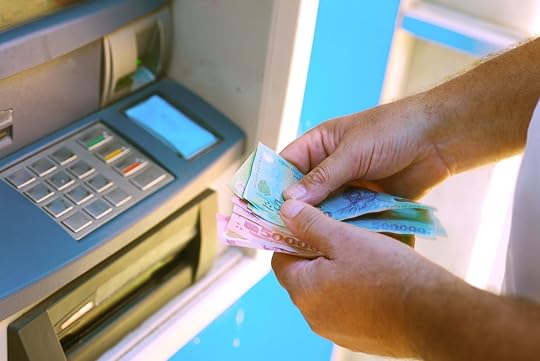
Photo: /Shutterstock
In major airport terminals the world over, rows of ATMs operated by major banks are a common site nowadays. The general best practice for international travel is to carry both a no-fee credit card and a debit card with low withdrawal fees. Using your debit card at an ATM is almost always a better option than using a money exchange service because you will get your cash with just a small international transaction fee (often not more than a couple of quarters) and avoid transaction fees and commissions entirely. Plus, you can withdraw local currency straight away when you arrive without having to fly with a bunch of USD in your pocket only to have to exchange it the moment you deplane. Check with your bank ahead of time to make sure your card can be used abroad, and you’ll be good to go.
At the airport
Airport currency exchanges are often the most expensive places to change money. Think about it from their perspective — a steady stream of wide-eyed tourists deposited fresh off the tarmac, likely far more concerned with moving safely to their hotel than they are with pinching pennies en route to getting there. Of course they’re not going to mind paying $25 to exchange $250 of money — they probably won’t even notice. As a budget-conscious traveler, think of airport currency exchanges the same way you view street hagglers — with a lot of caution, and knowing that the more questions you decide to ask, the harder it gets to say no to them. Make a fast dash for the nearest bank-owned ATM and rest assured you’re getting the best possible rate.
In the European Union
Due the compatibility of the US dollar and the euro, using an ATM in European Union countries is almost as straightforward as using the ATM at any bank back home. There are a couple of small quirks, but your money is safe and you’ll walk away with the necessary cash without it costing more than your morning Americano. The impact of Brexit on handling cash in the UK is about as predictable as the impact of Brexit on anything else, but in general, the pound is stable, so using ATMs in the UK should be totally fine in a post-Brexit world.
In situations where you’re comfortable carrying cash around
Currency exchange services typically charge a commission. ATMs charge a flat fee, no matter how much money you pull out. Your bank and the local ATM where you’re making a withdrawal are likely going to charge you this fee for the international transaction, ranging from a few cents to a few bucks on each side, each time you visit the ATM. Thus, it makes sense that you’d want to withdraw as much money as you’re comfortable carrying each time, instead of heading to the ATM each morning and making a withdrawal for that day’s cash. If you bank with Charles Schwab or another travel-friendly institution, you may avoid these fees altogether, thus negating the need to carry around US $500 in yen in order to avoid paying more than one ATM fee.
Also, it’s worth noting that US-issued, travel-friendly credit and debit cards are increasingly accepted at restaurants, shopping centers, and hotels around the world — which can eliminate the need to withdraw money very often unless you’re the type who routinely kisses $300 away each time you visit a night bazaar. While this is ideal for those worried about carrying cash, expect to pay a very small charge (less than $1) on each transaction unless your bank explicitly tells you there are no international fees.
When you have easy access to a major bank near your hotel or Airbnb
Remember that time you went to pay your tab at a cash-only bar and had to pay the $3.50 fee to use the ATM in the corner, plus an additional $2.50 because the ATM isn’t owned by your bank? Whenever possible, use the ATM of a major bank instead of an ATM managed by a store owner or other third party. Bank ATMs typically charge a lower withdrawal rate. If you’re not sure what the local bank chain is, just ask any local, including the concierge in the airport upon arrival.
When a money change service is the better option

Photo: Syda Productions/Shutterstock
If your debit or credit card isn’t from a big-name bank
In order to use a debit or credit card at a foreign ATM, the card must be compatible with the bank that operates the ATM. In today’s bank-scape, most cards are interchangeable and can be used internationally. The exception lies when your card doesn’t have the logo of a major credit card operator (Visa, MasterCard, Plus, or Cirrus) on it, or doesn’t have the logo of a local banking operator or credit card company where you are traveling.
These major financial companies operate across international borders. If you bank with a tiny credit union in a small US town where global travel isn’t on the agenda of most local residents, your card may not be compatible with international ATMs, and you just might be out of luck. Call up the bank and ask if their cards work internationally. And, of course, always let the bank know when and where you’re headed — few things will ruin your day faster than heading out to ATM only to have your transaction immediately flagged as suspicious and your card locked.
In situations where an ATM is exposed
“Exposed” is a loose term, so let’s clarify. Say you touch down in a big, busy city in a country where you don’t speak the language or have the slightest clue how to read the street signs, only to find out your accommodations aren’t exactly in the best neighborhood. You notice an ATM on a nearby corner, but it’s in an enclosed glass structure that would be quite easy to trap you inside of should someone be lurking in the shadows.
This is actually quite common in many countries across Asia, and the thought of entering the capsule and pulling out your sole connection to goods and services isn’t exactly a comforting thought. A money exchanger may charge more than an ATM, but the risk of getting robbed mid-transaction is quite low. Avoid isolated ATMs and instead visit those located in bank lobbies and other well-trafficked public places.
If you have traveler’s checks or your money is otherwise tied up outside of your bank account
Some people are old school. There’s no way around that. Traveler’s checks cost between one and three percent of the total purchased amount, and if you’re dead-set on using them to eliminate the risk of theft sending your trip plans into a whirlwind of disarray but still need some cash, your best option is to go into a local bank or other legit currency exchange location where you can typically do so free of charge or with only a small fee.
If this your route, adding an ATM into the mix makes about as much sense as bypassing the noodle-slinging street vendor to eat at McDonald’s in Southeast Asia. The same applies when you move from one country into another but still have cash left over from the former. Paying a currency exchange commission is far better than rendering your unspent cash useless for the rest of your trip. 

More like this: These travel apps actually save you money
The post When to use an ATM vs money exchange service while abroad appeared first on Matador Network.

Matador Network's Blog
- Matador Network's profile
- 6 followers



